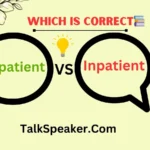The confusion between “have come,” “have came,” and “came” is a common pitfall in English grammar. It’s crucial to understand these verb forms to ensure clear and professional communication.
In this comprehensive guide, we’ll dissect these terms, explore their correct usage, and provide practical tips to help you master them.
The Basics of Verb Tenses
To grasp the differences between “came,” “have came,” and “have come,” it’s essential to understand verb tenses.
Verb tenses convey the timing of an action, helping us place events in the past, present, or future.
Verb Tenses Overview
- Simple Past Tense: Describes actions completed in the past. Formed by adding -ed to regular verbs or using the irregular past form. Example: “I walked to the store.”
- Present Perfect Tense: Indicates actions that occurred at an unspecified time or have relevance to the present. Formed with the auxiliary verb “have” followed by the past participle. Example: “I have finished my book.”
Understanding these tenses helps in using verbs correctly in sentences.
Understanding “Came”
“Came” is the simple past tense of the verb “come.” It’s used to describe actions that happened at a specific time in the past.
Definition and Usage
- Correct Usage: “She came to the meeting yesterday.” Here, “came” reflects that the action (arriving at the meeting) happened in the past.
- Examples:
- “We came home late last night.”
- “He came to the party without an invitation.”
Common Mistakes
Sometimes, people mistakenly use “came” when another verb form is needed. For example:
- Incorrect: “I have came to understand the problem.”
- Correct: “I have come to understand the problem.”
Understanding these distinctions is key to mastering verb usage.
The Present Perfect Tense
The present perfect tense connects past actions to the present. It’s formed using the auxiliary verb “have” followed by the past participle of the main verb.
Definition and Explanation
- Formation: “Have” + past participle.
- Examples:
- “I have read the book.”
- “They have visited the museum.”
- Examples:
- Usage of “Have Come”: This phrase uses the present perfect tense to indicate an action that started in the past and continues or has relevance to the present.
- Examples:
- “They have come to a consensus.”
- “She has come a long way since her first job.”
- Examples:
The Incorrect Usage of “Have Came”
The phrase “have came” is grammatically incorrect because “came” is not the correct form to use with the auxiliary verb “have.” Instead, “come” should be used.
Why “Have Came” Is Incorrect
- Grammar Rule: In the present perfect tense, the auxiliary verb “have” must be followed by the past participle form of the verb. The past participle of “come” is “come,” not “came.”
- Examples:
- Incorrect: “She has came to the conclusion.”
- Correct: “She has come to the conclusion.”
Examples of Incorrect Usage
- Incorrect: “He has came to help us.” Correct: “He has come to help us.”
- Incorrect: “They have came back from their trip.” Correct: “They have come back from their trip.”
Practical Tips for Avoiding Mistakes
Here are some tips to help you choose the correct verb form:
- Identify the Verb Form Needed: Determine if you’re using the simple past tense or present perfect tense. For the present perfect tense, use “have” + past participle.
- Remember Key Rules:
- Simple Past Tense: Use “came” for actions completed in the past.
- Present Perfect Tense: Use “have come” for actions that relate to the present.
Quick Grammar Check
Here’s a quick reference table to help:
Tense Correct Form Example Sentence Simple Past Tense Came She came to the party last night. Present Perfect Tense Have Come They have come to an agreement. Incorrect Have Came They have came to the decision.”
Exercises and Practice
To solidify your understanding, try these exercises:
- Fill-in-the-Blank Sentences:
- “She ____ (come/came) to the office early today.”
- “They ____ (have came/have come) to a conclusion.”
- Quiz:
- Choose the correct form: “I ____ (came/have come) to see you.”
- Correct the error: “He has came to the right place.”
Answers:
- “I have come to see you.”
- “He has come to the right place.”
Conclusion
Understanding the correct use of “came” and “have come” is vital for clear and accurate communication.
By mastering these verb forms, you’ll improve your writing and speaking skills. Remember:
- Use “came” for simple past actions.
- Use “have come” in the present perfect tense.

Sophie Mitchell, a seasoned English educator, brings her passion for language and years of teaching expertise to TalkSpeaker. With a knack for simplifying grammar and expanding vocabulary, she empowers learners to master English with confidence.




